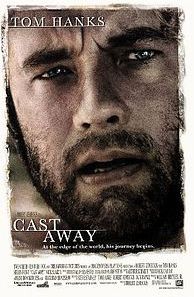Why do people organize themselves into social networks? Although social media networks are a recent phenomena, social networks have been around since the beginning of human society. Scientists continue to debate whether social networking is nature or nurture; but, one basic belief holds true, people join social networks because the benefits of joining outweigh the risks.
Perhaps individuals benefit from social networks, because social networks satisfy a basic human need. Abraham Maslow proposed a hierarchy of human needs in his 1943 paper. His framework is still used as a foundation for human behavior and motivation. Maslow asserted that after fulfilling basic physical needs (i.e. food, shelter and security) and basic security needs (i.e. safety, health, employment) people seek belonging through friendship, intimacy and family.

Maslow’s Hierarchy of Human Needs
Nicholas Christakis, a sociologist and epidemiologist at Yale University, studies social network structures and properties. His research suggests the connections between individuals, not just the collection of individuals, give a social network its characteristics. In other words, how we are connected affects how information, ideas, emotions, behaviors, and norms disseminate through a social network.
Two popular movies, Castaway and The Internship, illustrate social network extremes and Maslow’s hierarchy of human needs. In Castaway, Tom Hanks plays Chuck Noland, a FedEx executive, who is marooned on a deserted island with only his wits to physically and emotionally survive. In The Internship, Vince Vaughn and Owen Wilson play Billy and Nick, two unemployed salesmen who use their life experiences to help their team land jobs at Google.
 In both movies, the characters seek belonging. In the absence of human contact, Chuck Noland befriends Wilson, an imaginary friend. After a rough start, Billy and Nick eventually bond with their teammates Lyle, Neha, Stuart and Yo-Yo. Since The Internship takes place in a hyper-connected, high tech environment, its story line is able to further explore the connections between the characters and provide insights into Google’s corporate culture.
In both movies, the characters seek belonging. In the absence of human contact, Chuck Noland befriends Wilson, an imaginary friend. After a rough start, Billy and Nick eventually bond with their teammates Lyle, Neha, Stuart and Yo-Yo. Since The Internship takes place in a hyper-connected, high tech environment, its story line is able to further explore the connections between the characters and provide insights into Google’s corporate culture.
Google portrays themselves as a company that works towards changing the world through teamwork and creative engagement [Kuntze 2010]. Googlers (the name Google gives its employees) work in a college campus like setting,  and are encouraged to connect with other Googlers. Nooglers (new Googlers) are placed in practice based learning environments with cognitive apprenticeships [Johnson 2010]. The resulting connections provide Googlers diverse social networks, which further accelerates the flow of information, ideas, emotions, behaviors, and norms through their social networks. Ultimately, these unique connections helped Billy, Nick and their team gain valuable insights and win the internship challenge.
and are encouraged to connect with other Googlers. Nooglers (new Googlers) are placed in practice based learning environments with cognitive apprenticeships [Johnson 2010]. The resulting connections provide Googlers diverse social networks, which further accelerates the flow of information, ideas, emotions, behaviors, and norms through their social networks. Ultimately, these unique connections helped Billy, Nick and their team gain valuable insights and win the internship challenge.
Abraham Maslow’s observed that individuals seek intimacy through friendships, and Nicholas Christakis observed that the social network connections influence the flow of idea, norms and behaviors. Google has integrated these two ideas in their management philosophy and has created a unique environment that fosters collaboration and creativity.
 Organizations who emulate Google and encourage, friendly, diverse employee connections, will ultimately spawn more innovative ideas and create more business value.
Organizations who emulate Google and encourage, friendly, diverse employee connections, will ultimately spawn more innovative ideas and create more business value.
References:
Johnson, M. a. (2010). Learning to be a programmer in a complex organization: A case study on practice‐based learning during the onboarding process at Google. Journal of Workplace Learning, 180-194.
Kuntze, R. a. (2010). Google: Searching for Value. Journal of Case Research in Business and Economics , 1-10.



